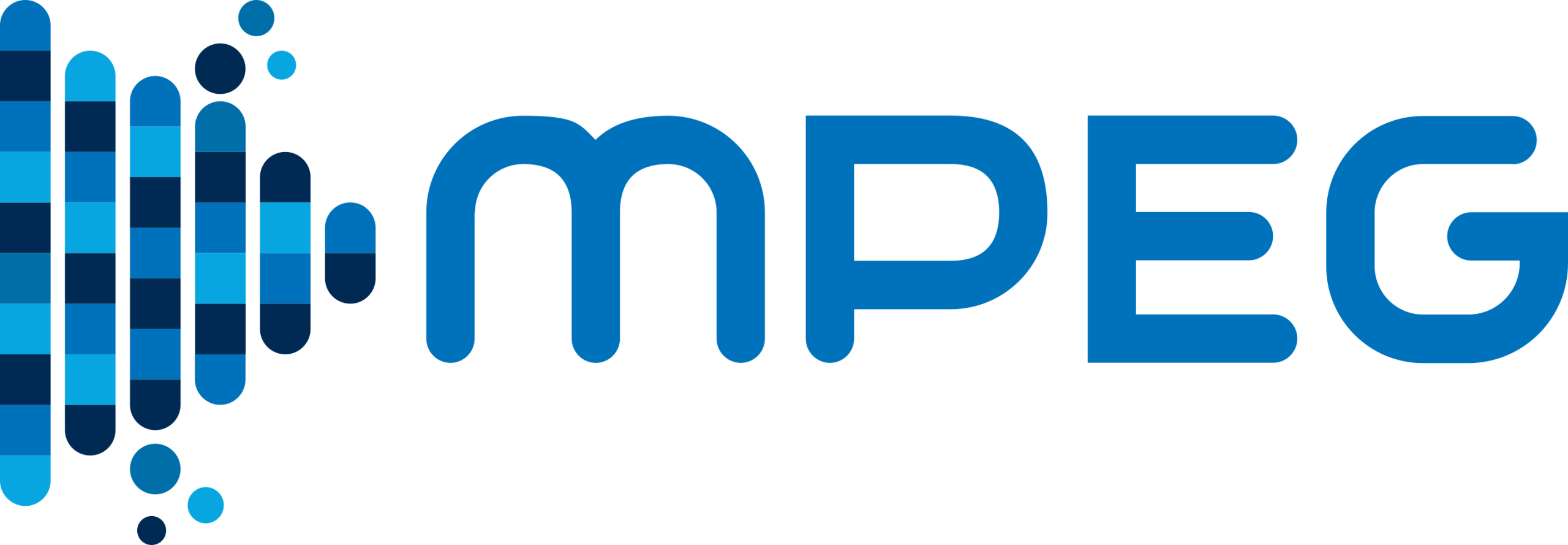
Convenor: Thomas Sporer
Deputy Director
Fraunhofer IDMT
WG 6 MPEG Audio is a group of experts from industry and academia, taking care of a vast set of audio compression standards developed by the Moving Picture Experts Group (MPEG) to efficiently compress digital audio and related metadata.
Key objectives and responsibilities of MPEG Audio include:
- Recommendation of Standards: responsible within ISO/IEC for recommending a set of standards that ensure consistent and efficient encoding and decoding of audio data.
- Collaboration: cooperates with other standardization bodies to address complementary or related technologies, ensuring broad compatibility and interoperability.
- Defining Audio Material and Devices: definition of relevant input audio materials and target presentation devices to ensure audio quality is preserved across various platforms and applications.
- Development of Algorithms: development of efficient audio encoding and decoding algorithms, to improve audio compression without sacrificing quality.
- Metadata for Audio: identification and definition of metadata that describes the properties of audio signals and creation of algorithms to extract this metadata, facilitating more accurate representation and rendering of audio.
- Audio Rendering: development of algorithms and metadata that enhance the rendering of audio on playback devices, ensuring high-quality sound reproduction.
- Coded Representation of Audio: proposal of standards for the coded representation of both audio signals and associated metadata, ensuring consistent and efficient data storage and transmission.
- Subjective Testing: conducting subjective tests to evaluate proposed and standardized technologies based on real-world listening experiences.
- Exploration of New Technologies: It also explores new technologies within its scope, continuously pushing the boundaries of audio compression and rendering to meet the needs of modern applications.
Overall, MPEG Audio plays a critical role in developing standardized audio technologies that enable high-quality, efficient audio encoding and decoding across a wide range of devices and platforms. The group’s work ensures that audio content is not only compressed effectively but also rendered with optimal quality, enhancing the user experience in various media application
WG6 MPEG Audio Coding Verification Test Reports
| Document | Meeting | Title |
|---|---|---|
| N1419 | 37 | Report on the Formal Subjective Listening Tests of MPEG-2 NBC multichannel audio coding |
| N1420 | 37 | Overview of the Report on the Formal Subjective Listening Tests of MPEG-2 NBC multichannel audio coding |
| N1712 | 39 | MPEG-2 AAC tools complexity overview |
| N2005 | 42 | Revised report on complexity of MPEG-2 AAC tools |
| N2006 | 42 | Report on the MPEG-2 AAC Stereo Verification Tests |
| N2276 | 44 | Report on the MPEG-4 audio NADIB verification tests |
| N2424 | 45 | MPEG-4 Audio verification test results: Speech Codecs |
| N2425 | 45 | MPEG-4 Audio verification test results: Audio on Internet |
| N2957 | 49 | Revised Report on complexity of MPEG-2 AAC Tools |
| N3075 | 50 | Report on MPEG-4 Version 2 Audio Verification Test |
| N3233 | 51 | Report on Transmission of MPEG-4 Audio over RTP |
| N5571 | 64 | Report on Informal Subjective Quality Tests of MPEG-4 Extension 1 (Bandwidth Extension) |
| N6009 | 66 | Report on the Verification Tests of MPEG-4 High Efficiency AAC |
| N6675 | 69 | Formal Verification Report on MPEG-4 Parametric Audio Coding |
| N7137 | 72 | Listening Test Report on HE-AAC V2 |
| N7686 | 74 | Verification Report on MPEG-4 ALS |
| N7687 | 74 | Verification Report on MPEG-4 SLS |
| N7701 | 74 | Performance of MPEG Surround Technology |
| N8851 | 79 | Report on MPEG Surround Verification Tests |
| N10032 | 85 | Report on MPEG-4 AAC-ELD Verification Tests |
| N11657 | 94 | Report on Spatial Audio Object Coding Verification Tests |
| N12232 | 97 | Unified Speech and Audio Coding Verification Test Report |
| N13215 | 102 | Verification Test Report on USAC Common Encoder,JAME |
| N16584 | 117 | MPEG-H 3D Audio Verification Test Report |
